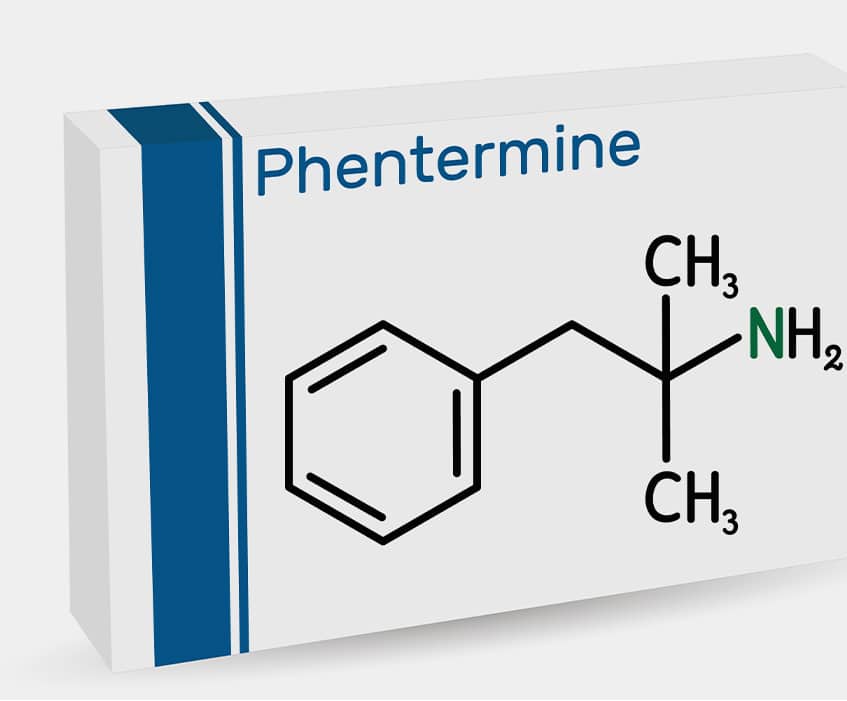

Medical Weight Loss in Wharton, NJ
Did you know that more than 40% of adults in the United States suffer from obesity? Unfortunately, there is no miracle cure for this condition. Perhaps worse is that more and more adults and children are gaining weight across the country, choosing the convenience of fast and nutrition-deficient foods over healthy eating, exercise, and positive life choices. From an aesthetic standpoint, being overweight is a struggle - clothes don't fit right, people make uncomfortable comments about how you look, and everyday activities are less appealing.
From a health and wellness standpoint, however, being obese is much worse. Your life is literally on the line. The people who love you and depend on you to be in their lives could lose you sooner than you expect. With time, you have a higher chance of suffering from significant, life-changing issues such as:
- Heart Disease
- High Blood Pressure
- Diabetes
- Stroke
- ED
- Sleep Apnea
- Respiratory Issues
- More
While obesity is a serious problem, a new medication on the market is giving hope to millions of men and women across the U.S. This game-changing treatment is called Semaglutide in Wharton, NJ. This anti-obesity medication is unique because it treats obesity as a chronic metabolic disease, rather than a problem that can be solved through sheer willpower. The best part? Semaglutide and other medical weight-loss peptides are now available at Global Life Rejuvenation.
Service Areas
Medical Weight Loss from Global Life Rejuvenation
At Global Life Rejuvenation, we understand that losing weight is not a one-size-fits-all approach. Our medical weight loss clinic offers custom medical weight loss plans tailored to your body, rather than plans based solely on your age or weight. In fact, our team of doctors and practitioners provides personalized guidance to help you achieve real results and live a healthier life.
Because the truth is maintaining good health and fitness are crucial in the modern world. Research has shown that viruses and diseases are more likely to affect those who are overweight and unhealthy. At Global Life Rejuvenation, we take a comprehensive, custom approach to medical weight loss that includes peptide therapy and more. We then work with you to make positive lifestyle changes, so you can lose weight, get healthy, and boost your wellbeing permanently - not for a few weeks or months.

Our medical weight loss plans can include:

Nutrition Guidance

Peptide Therapy

Hormone Therapy

Biometric Monitoring

Weight Loss Medications

Custom Medical Weight Loss Plans
If you're ready to get back to loving your life with more energy, confidence, and positivity, medical weight loss with peptide therapy may be for you. But to truly understand the benefits of peptides like Semaglutide, it's important you grasp what peptide therapy is and how it benefits your body.

Treatment in Wharton, NJ
Many individuals turn to peptide therapy to enhance their overall wellbeing by boosting hormones. Different types of peptides can target different areas of health, such as collagen peptides that can help improve skin, hair, and gut health.
Other peptides, such as AOD 9604, CJC 1295, and Semaglutide in Wharton, NJ, are incredibly beneficial for losing weight. Compared to vitamin supplements, peptide therapy works differently as peptides are already part of the proteins in our bodies, making them easier to absorb and benefit from. Conversely, our bodies can sometimes fail to absorb all the nutrients present in multivitamins, leading to their excretion through urine.
However, it's important to note that weight loss is a complex process that involves various factors like age, genetics, lifestyle, exercise, and diet. While peptides like Semaglutide can provide much-needed assistance in achieving your weight loss goals, they are most effective when combined with healthy dietary choices, regular exercise routines, and overall healthier lifestyle choices.
If you've already tried different weight loss plans and diets but haven't had any success, medical weight loss with peptide therapy may provide that extra boost you need to realize your goals.
What is Semaglutide Treatment in Wharton, NJ?
If you're looking to lose weight and keep it off, diet and exercise are important, but it can be difficult to stick to a routine. For busy adults and parents, Semaglutide can be a helpful tool for weight loss. This injection, approved by the FDA for diabetes and obesity, works by stimulating GLP-1 receptors in the brain to aid in weight loss and improve long-term health.
You may be wondering to yourself, "That sounds great, but how does this type of peptide work?" Semaglutide acts like glucagon in your body, which signals to your brain that you're full and don't need to eat anymore. When you take Semaglutide, and you try to overeat, your body waves a proverbial red flag as if to say, "That's enough."
Semaglutide also slows down digestion, reducing unnecessary snacking throughout the day. By reducing glucose spikes after meals, it reduces inflammation, which is important for overall health. Additionally, Semaglutide helps your pancreas secrete insulin, regulates the glucose levels in your body, and even has anti-aging and longevity properties. If you're struggling to lose weight, peptide therapies for weight loss like Semaglutide can be an invaluable addition to your weight loss plan from Global Life Rejuvenation.

When combined with healthy lifestyle choices like diet and exercise, Semaglutide can help provide:
- Long-Term Weight Loss
- Control of Insulin
- Reduction in Body Fat
- Lower Blood Pressure
- Lower Cholesterol
- Reduced Inflammation

Who Should Consider Semaglutide Therapy in Wharton, NJ?
There are multiple medications available to combat obesity by suppressing appetite and promoting weight loss. However, Semaglutide stands out as an exceptional option.
A recent study of 2,000 obese adults examined the effects of Semaglutide when combined with a diet and exercise program. The results were compared to those who only made lifestyle changes without taking Semaglutide. After 68 weeks, it was found that half of the participants using Semaglutide lost 15% of their body weight, with nearly a third losing 20%. In contrast, those who only made lifestyle changes lost an average of 2.4% of their weight.
It's obvious, then, that Semaglutide is a safe and effective supplement for your weight loss journey with Global Life Rejuvenation. But who is the ideal patient who should be taking it?
If you have a body mass index (BMI) of 27kg/m2 or higher and at least one weight-related condition, such as high blood pressure, Type 2 diabetes, or high cholesterol, or if your BMI is 30kg/m2 or higher, the FDA recommends Semaglutide for weight loss.

Healthy Eating Tips While Taking Semaglutide
As medical weight loss experts, one thing our doctors and practitioners know at Global Life Rejuvenation is that true weight loss isn't dictated by medicines. It's achieved by sticking to a combo of exercise, healthy life choices, and healthy eating habits. From there, peptides like Semaglutide in Wharton, NJ are great for taking your weight loss efforts to the next level of success.
One area where many patients fail in this process is with their diet. If you're considering Semaglutide treatment, keep these diet tips in mind.

Eat Whole Foods
To enhance your dietary habits, a practical approach is to concentrate on consuming whole foods, including fruits, vegetables, whole grains, lean protein, and healthy fats. These food items are rich in nutrients and can provide a feeling of fullness and satisfaction while also promoting your overall wellbeing.

Be Mindful When You Eat
Eating mindfully involves being fully present and engaged during meals. This entails taking the time to enjoy the flavor of your food, being aware of your body's hunger and fullness signals, and avoiding distractions like electronics or television.

Keep Your Body Hydrated
To maintain good health and support weight loss, it's crucial to drink plenty of water. It's recommended to drink at least 8-10 cups of water daily. You may also try adding low-calorie drinks like herbal tea or infused water to keep things interesting.

Use Meal Prepping to Your Advantage
Planning your meals in advance is an effective approach to maintaining a healthy diet. Set aside some time each week to plan your meals and snacks, keeping in mind to incorporate a balance of protein, complex carbohydrates, and healthy fats. This will prevent impulsive food choices and guarantee that you have nutritious options available when hunger strikes.
Other Peptide Therapies and Medicines for Medical Weight Loss in Wharton, NJ
Unlike many medical weight loss clinics, which only offer cookie-cutter weight loss plans and one or two additional fat-busting solutions, Global Life Rejuvenation provides access to new, innovative supplements and medicines. If you're used to fad diets and "quick" weight loss plans, peptides like AOD 9604 and others may be new to you. To help build your foundation of healthy living knowledge, let's take a look at a few of the most popular weight-loss peptides and medicines available at Global Life Rejuvenation.

AOD 9604 for Weight Loss
Often combined with Semaglutide regimens, AOD 9604 is known to promote fat breakdown, inhibit lipogenesis, and support tendons and cartilage. However, most recently, it has gained popularity due to its ability to boost metabolism and aid in burning fat.
What sets AOD 9604 apart is that it stimulates the pituitary gland without affecting tissue growth or blood sugar levels. Additionally, it can burn fat without causing overeating, making it a viable option for obese men and women who are trying to implement better eating habits.
Interestingly, AOD 9604 activates your body's fat-burning processes without requiring an HGH receptor. It also releases obese fat cells and reduces the accumulation of new fat cells. By helping to regulate blood sugar and manage insulin levels, AOD 9604 is excellent for weight loss but also for other maladies like inflammation.
Some conditions that this powerful peptide can help address include the following:
- Obesity
- Diabetes
- Damaged Cartilage
- Arthritis

CJC 1295 and Ipamorelin for Weight Loss
This medical weight loss supplement Is technically a combo of two peptides. These substances work by stimulating your pituitary gland to produce more of your body's natural human growth hormone, which is secreted during both waking and sleeping periods.
This results in increased protein synthesis and levels of insulin-like growth factors. As hormone secretagogues, they help release hormones into circulation while mimicking the pituitary gland's production. Extensive research has been conducted on the effects of CJC 1295 and Ipamorelin. As a tool for medical weight loss, it has shown very promising results.
That's because when growth hormone levels increase, nutrients are transported through the body faster, more fat is burned, and weight management becomes simpler. Additionally, because CJC 1295 and Ipamorelin increase the amount of growth hormone in your body, it stimulates the breakdown of triglycerides in adipocytes, leading to improved fat metabolism and reduced abdominal fat.
Benefits of CJC 1295 and Ipamorelin for weight loss include:
- Weight Loss
- Reduction in Body Fat
- Boosted Metabolism
- More Energy
- Enhanced Immune System
- More

MIC Injections for Weight Loss
A Methionine Inositol Choline (MIC) injection is a mixture of lipotropics that aid in fat breakdown. The key components - methionine, inositol, and choline - work together to metabolize fat cells and eliminate stored fat deposits in the liver and body. Methionine is an important amino acid, inositol contributes to proper cell formation, and choline is a water-soluble nutrient that promotes healthy liver function. When combined, these compounds may help reduce body fat.
When used in conjunction with a medical weight loss plan from Global Life Rejuvenation, MIC injections can be a powerful addition to reclaiming your health and wellbeing.
Request AppointmentPhentermine for Weight Loss
Like other weight loss peptides and medicines on this page, Phentermine can help you lose weight when you stick to a medical weight loss plan that includes dieting, exercise, and smart life choices. It does so by reducing your appetite, which limits the number of calories you eat every day.
As is the case with Semaglutide, Phentermine has been approved by the FDA and is supported by clinical studies that show it can support weight loss. With time, patience, and healthy living, this supplement may help you reach your wellness goals sooner than you thought possible.
Request Appointment
7-Keto DHEA for Weight Loss
In the body, 7-keto-DHEA is produced from dehydroepiandrosterone (DHEA), which is a hormone made by glands near your kidneys. However, unlike DHEA, 7-keto-DHEA is not converted into androgen and estrogen in your body. Instead, 7-keto-DHEA is used orally or topically to boost your body's metabolism. It also helps convert more of your energy into heat, instead of storing it in your body as fat, which can accumulate with time and lifestyle choices.
Much like Semaglutide treatment in Wharton, NJ, 7-keto-DHEA has been shown to be very effective for weight loss as well as a host of other issues. Additional benefits of taking 7-keto-DHEA may include the following:
- Weight Loss
- Improvement to Lean Muscle Mass
- Boosted Thyroid Activity
- Enhanced Memory
- Anti-Aging Treatment
- Better Memory
Lipo Scuplt Cream
Have you tried everything under the sun to try and eliminate the cellulite on your legs, arms, and other areas of your body? If you're like most people, getting rid of cellulite isn't just difficult - it's nearly impossible. Fortunately, those days are over. Lipo Sculpt Cream from Global Life Rejuvenation can help reduce the unsightly appearance of cellulite while also refining your figure and firming up your skin.
The active ingredients in this product have the ability to reduce and prevent the growth of fatty tissue while also improving microcirculation. They work together to treat both adipose and aqueous cellulite, and aid in the elimination of fatty deposits and excess water stored in the tissues. This results in a reduction of dimples and an overall improvement in the appearance of your skin.
If you have experienced success with a medical weight loss plan and reached your target weight but still suffer from cellulite, Lipo Sculpt Cream is a fantastic choice to consider. A few of the most common benefits include:
- Anti-Cellulite Properties Reduce Cellulite and Smooth Skin Dimples
- Slimming Effect for Reducing Thigh and Waist Circumference
- Leaves Your Skin Feeling Firm and Healthy

Health and Wellness Begin with Medical Weight Loss from Global Life Rejuvenation
Are you craving a productive life at a healthy weight? Are you ready to make a meaningful difference in your life and the lives of your loved ones? The pathway to wellbeing starts by contacting our office for an in-depth consultation, where we'll learn more about your weight-loss goals and needs.
From there, we'll create a custom weight-loss plan tailored to your body. This plan will map out the steps of your weight-loss journey, including peptide therapies like Semaglutide in Wharton, NJ. Though every person's weight management goals are different, when you're a patient at Global Life Rejuvenation, you benefit from dedicated doctors and practitioners committed to improving your weight and, in turn, your health.
Whether your health is on the line, or you don't like how being overweight makes you look and feel, our team is ready to guide you toward long-term health and happiness. This way, you can get healthy, stay in shape, and fall in love with your newfound body.
 Call Us 866.793.9933
Call Us 866.793.9933
Make an Apportment
Latest News in Wharton, NJ
Wildfire burning through 510 acres of NJ forest now 100% contained
Dan Stammhttps://www.nbcphiladelphia.com/news/local/wharton-state-forest-wildfire/3840398/
A wildfire burned more than 500 acres of a New Jersey state forest Wednesday into Thursday, sending thick white smoke into the air and closing a Camden County road for some time.Léelo en español aquí.Around 8 a.m. Thursday morning, th...
A wildfire burned more than 500 acres of a New Jersey state forest Wednesday into Thursday, sending thick white smoke into the air and closing a Camden County road for some time.
Around 8 a.m. Thursday morning, the New Jersey Forest Fire Service provided an update on social media saying that the fire had grown to cover 510 acres, but was 100% contained.
The fire was burning before 10 a.m. Wednesday in the Jackson Road area of Wharton State Forest in Waterford Township, Camden County, and Shamong Township, Burlington County, the New Jersey Forest Fire Service initially said on social media.
By 11 a.m. Wednesday, the fire covered at least 100 acres and was 0% contained the state forest fire service said.
Breaking news and the stories that matter to your neighborhood.
Despite the fire being continued Thursday morning, the forest service warned of ongoing impacts: "The public is advised that smoke may be visible for an extended period while firefighters work to mop-up the wildfire. Motorists traveling in the area should remain cautious of smoke, firefighters and fire vehicles that may be working on the roadsides."
Roads, trails, campground closed as fire crews battle the blaze
"Crews are utilizing a backfire operation to burn fuel ahead of the main body of fire which will help aid containment efforts," the forest fire service said Wednesday.
Jackson Road reopened around 6 p.m. after being closed from Tremont Avenue to Atsion Road due to the fire, the forest fire service said.
The Goshen Campground was evacuated and will remain closed through Sunday, officials said. The Burnt Mill Goshen Pond and Sleeper Creek trails were closed and would be assessed before reopening.
Forest fire officials said that no structures were threatened and no one was hurt.
The cause of the fire remained under investigation Thursday.
What exactly is a wildfire?
What makes this particular fire a wildfire and not another type of fire?
The New Jersey Forest Fire Service defines a wildfire as: "An uncontrolled fire burning the different types of vegetation that cover the land. A wildfire is considered a 'major wildfire' after it exceeds 100 acres in size."
The state forest fire service also defines "backfire," "containment," "fireline" and "threatened" on its social media posts.
April is prime season for wildfires in NJ's Pine Barrens
Peak wildfire season across the tri-state area is April, says NBC10 Philadelphia First Alert Weather meteorologist Justin Godynick.
"The New Jersey Pine Barrens are most susceptible to fires because of the dry pine straw on the forest floor," Godynick says. "Even after record setting rainfall over the past several months the sandy soils of the Pine Barrens allow for water to drain quickly. This allows the forest floor to dry out faster than surrounding areas.
"According to Climate Central the burning season in the Pine Barrens has extended by four days. This is because of hotter and drier stretches brought on by climate change."
Despite the danger that wildfires can pose, the fires also help create new life in the Pine Barrens.
"Pine trees have adapted their pinecones to respond to wildfires," Godynick said. "The cones open up and release seeds when exposed to fire, leading to more pine trees."
One of the largest wildfires in the Pine Barrens occurred in the 1990s -- since then, prescribed burning, which is intentionally setting fire to dry areas, has been implemented to reduce the spread of wildfires.
"99% of wildfires are caused by human activity," Godynick said. "The other 1% usually comes from lightning strikes.
"We can reduce the risk of fire, by avoiding outdoor burning on dry days and extinguishing cigarette butts properly."
Ascend, Montclair’s Only Cannabis Dispensary, is Relocating to Morris County
The Montclair Girl Teamhttps://www.themontclairgirl.com/ascend-montclair-relocating-wharton-nj/
Since the 2021 legalization of marijuana in New Jersey, and the start of adult-use sales in 2022, cannabis has become a popular tool for health, wellness, and recreation (and we’ve covered it all here). Ascend Cannabis Montclair, a vertically integrated cannabis multi-state operator (MSO), provides high-quality cannabis products. Located at 395 Bloomfield Avenue in Montclair, Ascend was a go-to locale for anyone looking for a comfortable, famil...
Since the 2021 legalization of marijuana in New Jersey, and the start of adult-use sales in 2022, cannabis has become a popular tool for health, wellness, and recreation (and we’ve covered it all here). Ascend Cannabis Montclair, a vertically integrated cannabis multi-state operator (MSO), provides high-quality cannabis products. Located at 395 Bloomfield Avenue in Montclair, Ascend was a go-to locale for anyone looking for a comfortable, familiar, and easy experience — whether you’re new or familiar with the cannabis game. We recently found out that Ascend will be moving its Montclair location to the Morris County town of Wharton, citing “oversaturation” in Montclair as the reason. Keep reading to learn more about Ascend and the Montclair location’s move to Northwest New Jersey.
Per NJBIZ, the Montclair location of Ascend Cannabis will be moving to Wharton, New Jersey following the New Jersey Cannabis Regulatory Commission’s December 7th approval of its location change application. Wharton is located in Northwest New Jersey in Morris County. The store will be located at 325 Route 15 North, a former Capital One Bank location.
Back in May, Ascend told the Wharton mayor and council that it wanted to move out of Montclair because the area was “oversaturated” and believed the new location would help hit an underserved market.
Per the article, Ascend looks to move out of Montclair by the summer/early fall of 2024. We reached out to Ascend Cannabis for more details about the move, and will update this story with comment. For now, Ascend Cannabis Montclair remains open.
Read More: New Cannabis Dispensary ‘Nightjar’ Coming to Bloomfield
Ascend Cannabis Montclair has a comprehensive range of products. Since Ascend is a fully integrated company beginning with cannabis cultivation, processing, manufacturing, distribution, and retail operations, there is a high level of quality control from start to finish.
“We’re all about keeping things smooth and reliable from start to finish. From growing the products you love to a seamless store experience, we’ve got you covered!” Hailey Horn, Marketing Manager for Ascend, told MG back in July.
Ascend highlights and capitalizes on the endless potential of cannabis as a product and as a “positive force in culture.” The company is a multi-state, multi-use business that caters to various individuals and their needs and preferences.
Ascend Cannabis Montclair provides the community with high-quality cannabis products like flower, vapes, concentrates, edibles, and topicals, as well as accessories.
The store sells flavored cartridges like Doublemint, Lime Sorbet, and Mango Tango. Additionally, there are various types of flower, including Indica and Hybrid strains. You can also purchase accessories like bongs, bowls, joint holders, and different-shaped pipes (grape pictured above!).
Additionally, the store’s ‘budtenders’ are knowledgeable, experienced, and able to provide a safe environment for you to express and meet your cannabis needs.
With individual categories and detailed descriptions + pictures of flower and vaporizers to edibles, concentrates, tinctures, and more — you won’t have any trouble finding the Ascend product perfect for you. When in doubt, you can’t go wrong with Ascend Cannabis Montclair’s house brands, Ozone and Simply Herb.
Ascend is more than just a job provider for returning citizens. They actively participate in programs and initiatives supporting cannabis expungement, mental health and case management, and food assistance on a consistent basis. By partnering with organizations dedicated to expungements and working with the returning citizen community, Ascend not only hosts expungement clinics but also creates a pathway for interested individuals to join the cannabis industry.
In New Jersey, Ascend collaborates with Blaze Responsibly, focusing on cannabis-related offenses and all expungeable offenses. This partnership allows them to reach out to individuals who may have limited access to existing expungement clinics, garnering positive feedback from participants. If you’re interested in staying up to date on Ascend’s expungement and community events, you can follow @ascend.nj on Instagram for updates.
Customers can shop in-store or order online and pick up their purchases. All cannabis products are locally grown and pricing is affordable.
See More: Hoboken Dispensary ‘Terrapin Care Station’ Open on River Street
Ascend has three stores across New Jersey in Rochelle Park, Fort Lee, and — of course — Montclair, which will soon relocate to Wharton. In addition to its New Jersey locations, Ascend also operates in Illinois, Maryland, Massachusetts, Michigan, Ohio, and Pennsylvania.
Stay in the know with all of the local news + happenings by following @themontclairgirl on Instagram and TikTok.
Wildfire burns uncontrollably through 100 acres of NJ forest
Dan Stammhttps://www.nbcphiladelphia.com/news/local/wharton-state-forest-wildfire/3840398/
A wildfire burned in a New Jersey state forest Wednesday, sending thick white smoke into the air and closing a Camden County road.Léelo en español aquí.The fire was burning before 10 a.m. in the Jackson Road area of Wharton State Fore...
A wildfire burned in a New Jersey state forest Wednesday, sending thick white smoke into the air and closing a Camden County road.
The fire was burning before 10 a.m. in the Jackson Road area of Wharton State Forest in Waterford Township, Camden County, and Shamong Township, Burlington County, the New Jersey Forest Fire Service said on social media.
By 11 a.m., the fire covered at least 100 acres and was 0% contained the state forest fire service said.
Roads, trails, campground closed as fire crews battle the blaze
"Crews are utilizing a backfire operation to burn fuel ahead of the main body of fire which will help aid containment efforts," the forest fire service said.
Jackson Road was closed from Tremont Avenue to Atsion Road due to the fire, the forest fire service said. The Goshen Campground was evacuated and the Burnt Mill Goshen Pond and Sleeper Creek trails were closed.
Forest fire officials said that no structures were immediately threatened.
What exactly is a wildfire?
What makes this particular fire a wildfire and not another type of fire?
The New Jersey Forest Fire Service defines a wildfire as: "An uncontrolled fire burning the different types of vegetation that cover the land. A wildfire is considered a 'major wildfire' after it exceeds 100 acres in size."
The state forest fire service also defines "backfire," "containment," "fireline" and "threatened" on its social media posts.
This story is developing and will be updated.
Ascend relocating dispensary out of Montclair (updated)
Kimberly Redmondhttps://njbiz.com/ascend-relocating-dispensary-out-of-montclair/
Ascend Wellness Holdings Inc. is leaving Montclair.Following the New Jersey Cannabis Regulatory Commission’s Dec. 7 approval of its location change application, the Massachusetts-headquartered multistate operator plans to move retail operations about 23 miles to Wharton.Currently located at 395 Bloomfield Ave. in Montclair, the facility was the first alternative treatment center to launch in New Jersey following the state’s legalization of medicinal cannabis, opening as Greenle...
Ascend Wellness Holdings Inc. is leaving Montclair.
Following the New Jersey Cannabis Regulatory Commission’s Dec. 7 approval of its location change application, the Massachusetts-headquartered multistate operator plans to move retail operations about 23 miles to Wharton.
Currently located at 395 Bloomfield Ave. in Montclair, the facility was the first alternative treatment center to launch in New Jersey following the state’s legalization of medicinal cannabis, opening as Greenleaf Compassion Center. In 2021, it was acquired by Ascend and rebranded as part of the MSO’s family of dispensaries.
Since then, Ascend has opened two other brand new stores selling recreational and medicinal cannabis in New Jersey – Fort Lee in August 2022 and Rochelle Park in May 2021.
In Wharton, Ascend plans to launch at 325 Route 15 N., a former CapitalOne bank location that the company found desirable because of its ample parking and proximity to highways.
During a May appearance before the Wharton mayor and council, the company told officials it wanted to leave downtown Montclair because the area was “oversaturated” and believed the new location would help hit an underserved market.
Along with community engagement, local job creation and other outreach efforts, Ascend representatives said Wharton would stand to see about $460,000 in revenues through the excise tax based on the average New Jersey dispensary run rate of $23 million annually.
Wharton was among the 80% of municipalities across the state that opted out of allowing cannabis sales; however, in June, officials reversed course and lifted the restrictions.
“The timeline for us moving out is late summer or early fall. We are excited about moving to our location in Wharton New Jersey,” a spokesperson for Ascend told NJBIZ, adding, “Plans are already underway to turn the existing Montclair store over to social equity license holders.”
Editor’s note: This story was updated at 8:45 a.m. ET Dec. 11, 2023, to include a statement from Ascend.
Disclaimer:
